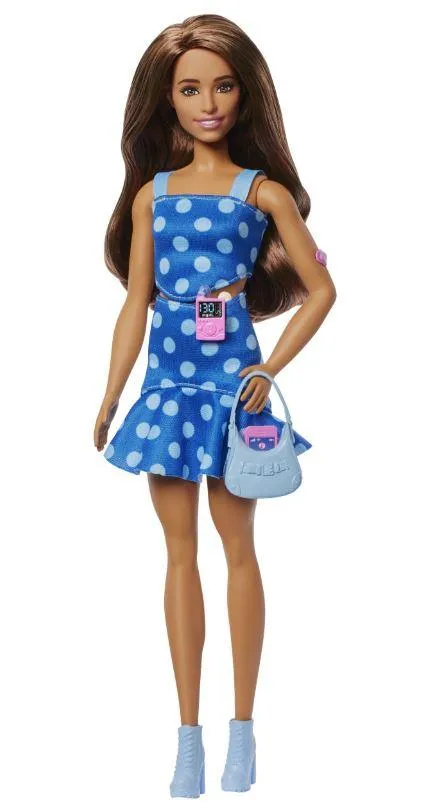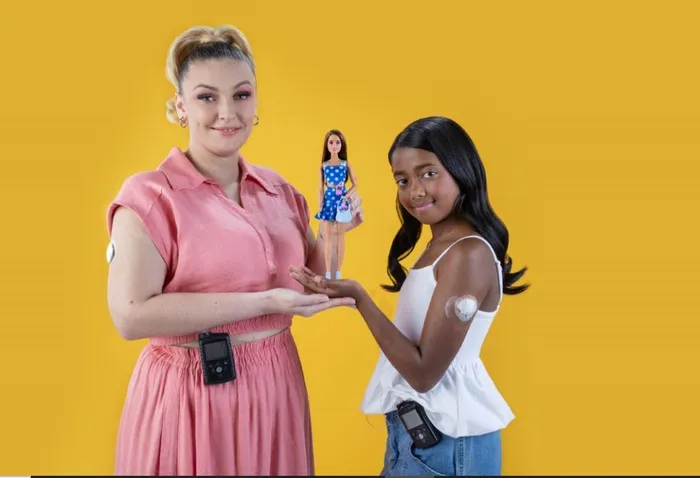Barbie introduces first doll with type 1 diabetes to promote awareness

Mattel has launched their latest Barbie with type 1 diabetes
Image: Supplied
Sporting a blue polka-dot crop top, ruffled miniskirt, a continuous glucose monitor, an insulin pump and a purse, the latest Barbie is the brand’s first doll with type 1 diabetes.
Makers of the famous Barbie doll, Mattel, partnered with Breakthrough T1D (formerly JDRF), the leading global type 1 diabetes research and advocacy organisation committed to accelerating life-changing breakthroughs to cure, prevent, and treat type 1 diabetes and its complications.
T1D is a chronic autoimmune condition that causes the pancreas to make very little insulin or none at all, leading to dependence on insulin therapy and the risk of short and long-term complications.
Locally, this doll is supported by the Diabetes Alliance, a national coalition of organisations and individuals committed to improving the lives of people living with diabetes in South Africa.
Dr Patrick Ngassa Piotie, chairperson of Diabetes Alliance South Africa, said the introduction of a Barbie doll with a continuous glucose monitor (CGM) was a powerful moment for diabetes awareness.
"It reflects one of the most important innovations in diabetes care in recent years, namely continuous glucose monitoring, which has transformed the lives of many people living with diabetes, especially children.
"By bringing this reality into the hands of children everywhere, we help reduce stigma, spark empathy, and foster important conversations in families, schools, and communities," said Piotie.

Two local ambassadors championing visibility for type 1 diabetes, South African artist, Holly Rey, and dancer, Sayuri Sewsunker with the latest Barbie doll
Image: Supplied
South Africa has two local ambassadors championing visibility for T1B. They are 29-year-old multi-award winning South African artist, Holly Rey, and 10-year-old dancer, Sayuri Sewsunker.
Rey said growing up with type 1 diabetes, she always felt like an outsider and was looked at like there was something wrong with her and was bullied as a result of it.
"Diabetes was viewed as something that you did to yourself and this lack of understanding led to being called names, being left out of activities, birthday parties and sports teams.
"The truth is, I found a lot of comfort in playing with my Barbie's as a child. If there was a Barbie with type 1 diabetes back then, I think it would have really changed my life. Not only would it have made me feel seen and feel like there was nothing wrong with me, but it also would have made kids at school realise that having diabetes does not mean that there is something wrong with you, in fact it makes you special. Because if Barbie has diabetes, then it must be okay for me to have diabetes, it might even be cool,” said Rey.
Rey believes that this Barbie with diabetes is going to create so much awareness around diabetes and change the narrative around what diabetes is and who it looks like.
"Diabetes, type 1 and 2, affects millions of people and I think that this Barbie is going to ignite some very important conversations that need to be had, not just with kids, but with adults, society and healthcare system decision makers," said Rey.
The Barbie fashionistas line features more than 175 looks across various skin tones, eye colours, hair colours and textures, body types, disabilities, and fashion styles, including a Blind Barbie doll, a Barbie doll with Down Syndrome, and a Barbie doll with Hearing Aids, among others.